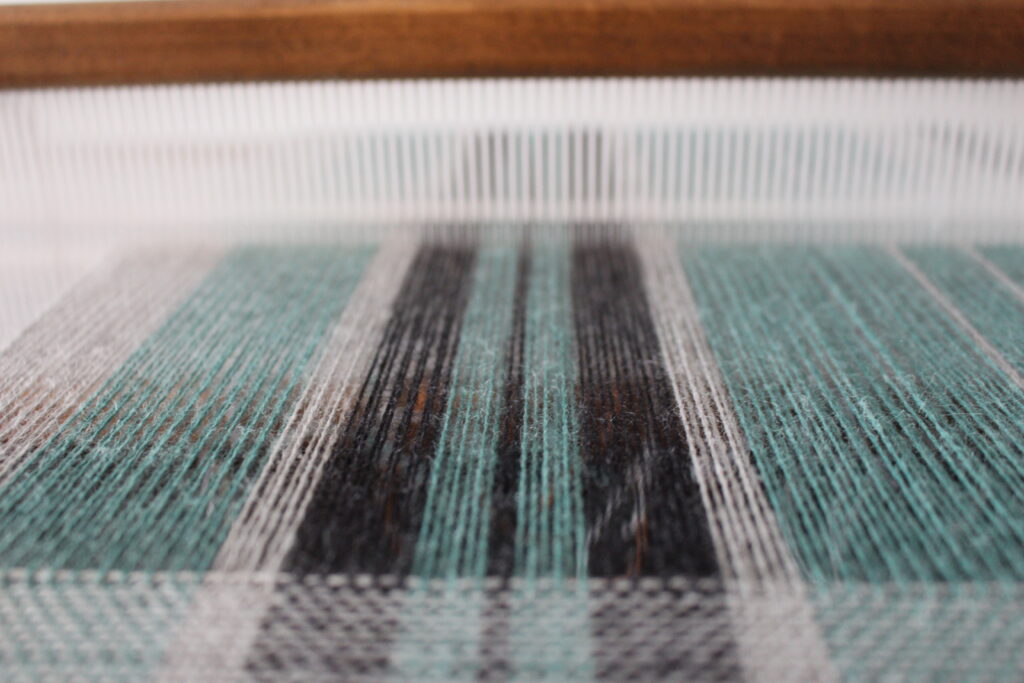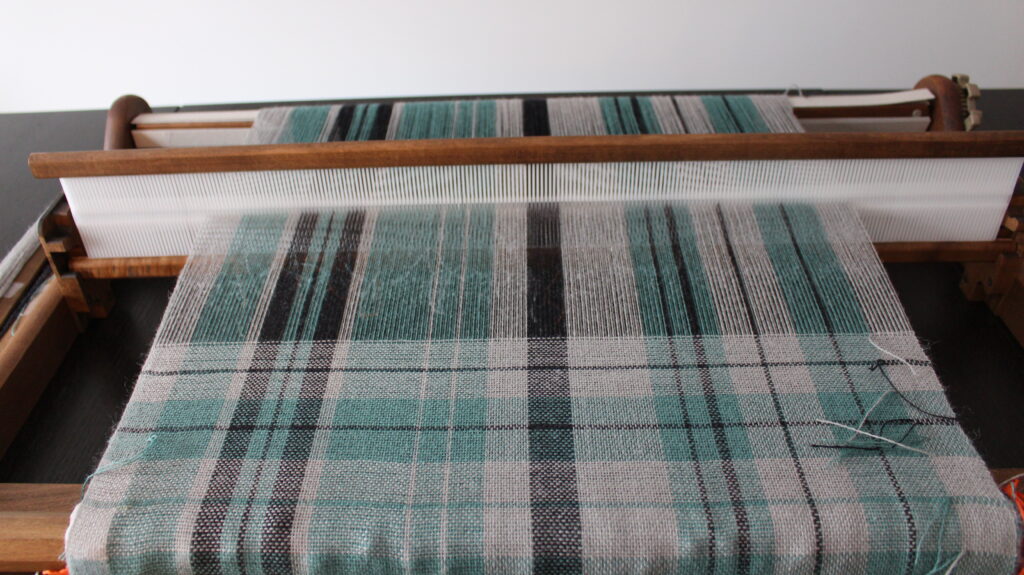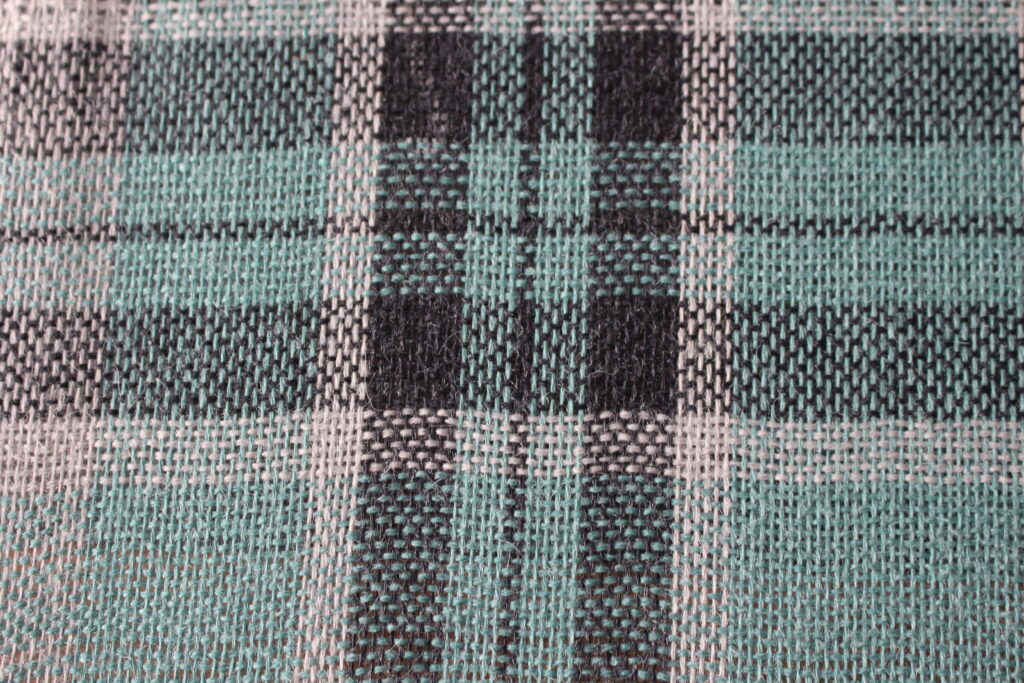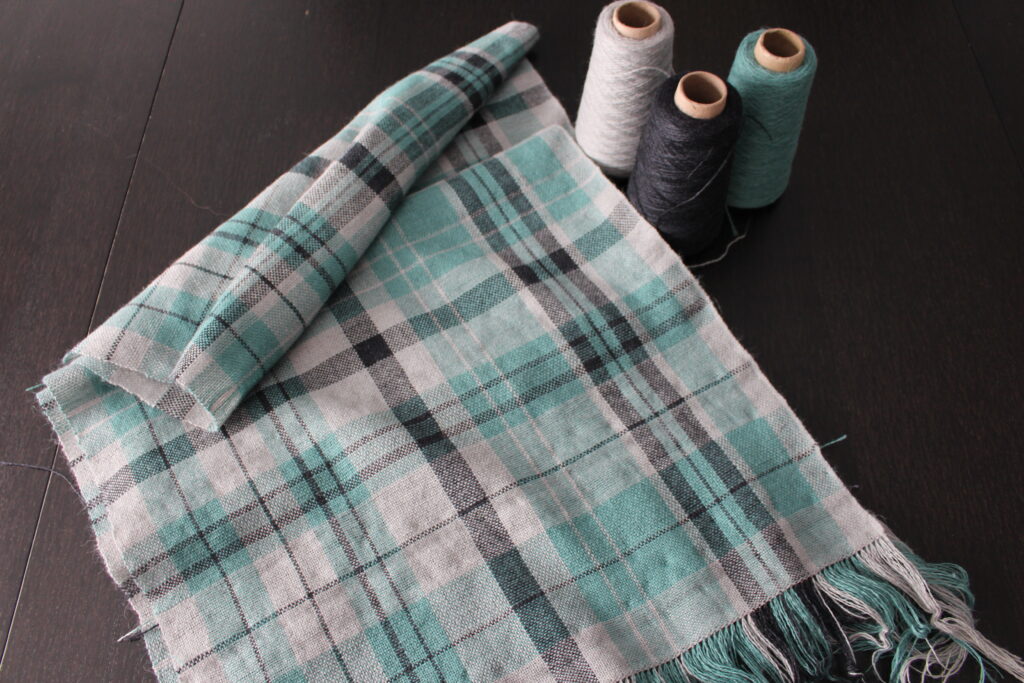Weaving Plaid on a Rigid Heddle Loom
Weaving plaid is probably one of the must fun thing to do on rigid heddle loom. It’s not complicated and the results are always amazing! Watch this video to see how I wove a scarf combining patterned plaid and some freestyle!
Disclaimer: Links included on this page might be affiliate links. This means that if you purchase a product or service with the links that I provide, I may receive a commission. Please note that there is no additional charge to you. Thank you for your support!
When I started this project, I knew that I wanted to weave plaid, but I also wanted to have some fun playing around with colors. This is why I decided to have a part that is a patterned plaid and another part that is just freestyle.
I used fine Alpaca-Silk yarn in three different colors: green, grey and black. I wanted this scarf to be mostly green, so I did not put that much of the other colors.

For the patterned part of the project, I sat down and figured out how I wanted my plaid to look like. I then counted meticulously each yarn thread. Here is the sequence I came up with in the warp:
-6 grey threads
-10 black threads
-6 green threads
-2 black threads
-6 green threads
-10 black threads
-6 grey threads

I really wanted to have an asymmetrical effect. I just love how the mirror effect looks like.

Then I warped the freestyle part. There, I only followed my inspiration and I played around with colors. There really were no rules. I couldn’t even repeat what I did there!
Then I started weaving! This is when to plaid really took form. To created the plaid pattern, I had to repeat in the weft, the sequence of color that I did in the warp. This brings me to a key concept in creating plaid which is called “balanced weave”. It’s important to explain it before going any further.
If you are interested in getting a loom just like mine, I invite you to visit The Woolery website here: https://woolery.com/ashford-rigid-heddle-loom.html?aff=214

Balanced weave
We have a balanced weave when the number of threads for 1 inch of warp is the same as the number of threads in 1 inch of weft. This means that the ends per inch (EPI) and the picks per inch (PPI) are the same. A good hint to know if you have a balanced weave is the square created when the threads of the same color meet. In other words, the place where I had 6 green warp threads and 6 green rows of weft should be relatively square. If their meeting point had been more of a rectangle, then this would have mean that it wasn’t a balanced weave. In this case, I would have woven rows until the pattern looked like a square, regardless of the number of rows.

The previous picture is a nice example. If we count the black threads, we will see that there are 10 thread in the warp and 10 in the weft. As you will notice, the meeting point is slightly more rectangle than square. It’s because the cloth is still under tension on the loom. It’s important to take that into consideration when trying to create a perfect square. As soon as the scarf is off the loom, the pattern will be nicely squared. Just like in the following picture.

Then for the rest of the scarf, I just wove as I felt! Most of the time, I tried to follow the same sequence as I did in the warp, even if this sequence was in itself random. The result is quite amazing! I hope this inspires you to try weaving plaid too.

Hi that was a very informative post. thank you for listing the type of yarn and the number of threads in each color of the pattern. Saving and will try this!
You are welcome!
I love this scarf!! What size yarn did you use and where did you buy it? 🙂
Thank you! I used some beautiful 14/2 Alpaca-silk yarn that I bought from Maurice Brassard directly. I know that Gather Textile in Alberta also holds this yarn. I hope this helps!